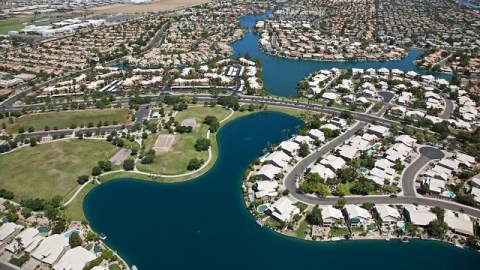Why Cul-De-Sacs Aren’t All That Bad

What’s the Latest Development?
Valdosta State University sociologist Thomas R. Hochschild Jr. interviewed sets of adjacent neighbors living in three different street configurations — the bulb cul-de-sac, the dead-end cul-de-sac, and the linear through street — to find out how well they related to each other. He found that those who lived in the bulb cul-de-sac were most likely to say that they viewed their neighbors “like family” to the point where they loaned each other items, such as tools and food, and looked out for each other. Just over 25 percent of bulb cul-de-sac residents strongly agreed with the statement “[A] feeling of friendship runs deep between me and my immediate neighbors.” None of the through-street residents polled shared that sentiment.
What’s the Big Idea?
Academics in a variety of disciplines have attacked cul-de-sacs for, among other things, eco-unfriendliness and difficulty of access. Hochschild’s findings, published in Journal of Urban Planning and Development, indicate that their very design promotes neighborliness, and from his perspective, that’s something that shouldn’t be so quickly dismissed. “I’m concerned about the breakdown of community and of society, and there’s a lot of research that indicates that people today are less likely to know their neighbors, they’re less likely to participate in neighborly interaction.”
Photo Credit: Shutterstock.com
Read it at The Atlantic Cities





